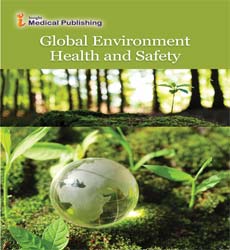The effect of environmental factors on the compounds of tomatoes (Lycopersicon esculentum Mill.) growing in the greenhouse and in the field.
Abstract
The tomato plant (Lycopersicon esculentum Mill.) is one of the most important crops in the world. It is considered both a fruit and a vegetable, and is an integral part of the kitchen all over the world, especially in the Mediterranean region. Vegetable quality is a broad term that includes physical properties, flavor, and health–related compounds. In the same context, this study aims at determining the quantity and quality of production in green houses and in the field in different environmental conditions. Furthermore, we want to determine the effect of environmental conditions, particularly temperature, on the nutritional value of different varieties of tomato and compare (Riogrande) and (Marmande) varieties to determine the best agricultural environment for the production; in addition to knowing the role of storage in changing tomato compounds and the best storage temperature to preserve tomato compounds for one month. To do so, two varieties of tomatoes were planted in greenhouse and in the field. We carried out two post-harvest studies that are:
- A study immediately after harvest of tomatoes where we measured the number of fruits in plant, the height of tomato, and the total weight. We analyzed the Lycopene content, β-carotene, total sugars, total acids, and total polyphenols
- Post-storage of one month at different temperatures at 0,-10 and -20 â?¦C. Findings show that the physiological traits differ from one variety to another and from one environment to another. The direct analyses of tomato after the harvest have shown that they contain significant amounts of bioactive components, conversely, the result of the stored tomatoes indicated a loss of compounds; a decrease was slight for tomatoes stored at 20 â?¦C
Open Access Journals
- Aquaculture & Veterinary Science
- Chemistry & Chemical Sciences
- Clinical Sciences
- Engineering
- General Science
- Genetics & Molecular Biology
- Health Care & Nursing
- Immunology & Microbiology
- Materials Science
- Mathematics & Physics
- Medical Sciences
- Neurology & Psychiatry
- Oncology & Cancer Science
- Pharmaceutical Sciences
